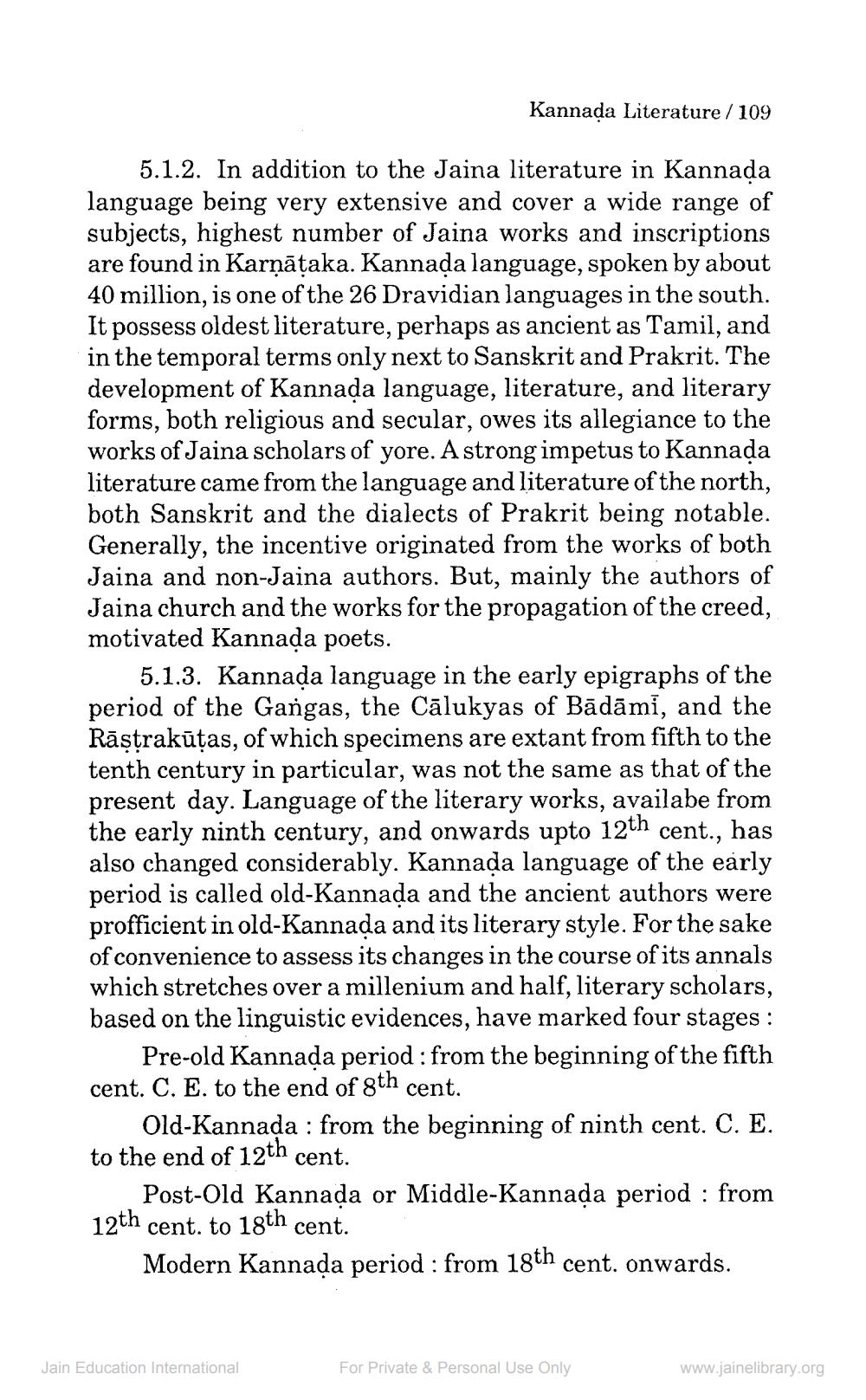________________
Kannada Literature / 109
5.1.2. In addition to the Jaina literature in Kannada language being very extensive and cover a wide range of subjects, highest number of Jaina works and inscriptions are found in Karņāțaka. Kannada language, spoken by about 40 million, is one of the 26 Dravidian languages in the south. It possess oldest literature, perhaps as ancient as Tamil, and in the temporal terms only next to Sanskrit and Prakrit. The development of Kannada language, literature, and literary forms, both religious and secular, owes its allegiance to the works of Jaina scholars of yore. A strong impetus to Kannada literature came from the language and literature of the north, both Sanskrit and the dialects of Prakrit being notable. Generally, the incentive originated from the works of both Jaina and non-Jaina authors. But, mainly the authors of Jaina church and the works for the propagation of the creed, motivated Kannada poets.
5.1.3. Kannada language in the early epigraphs of the period of the Gangas, the Cālukyas of Bādāmi, and the Rāstrakūtas, of which specimens are extant from fifth to the tenth century in particular, was not the same as that of the present day. Language of the literary works, availabe from the early ninth century, and onwards upto 12th cent., has also changed considerably. Kannada language of the early period is called old-Kannada and the ancient authors were profficient in old-Kannada and its literary style. For the sake of convenience to assess its changes in the course of its annals which stretches over a millenium and half, literary scholars, based on the linguistic evidences, have marked four stages :
Pre-old Kannada period : from the beginning of the fifth cent. C. E. to the end of gth cent.
Old-Kannada : from the beginning of ninth cent. C. E. to the end of 12th cent.
Post-Old Kannada or Middle-Kannada period : from 12th cent. to 18th cent.
Modern Kannada period : from 18th cent. onwards.
Jain Education International
For Private & Personal Use Only
www.jainelibrary.org




